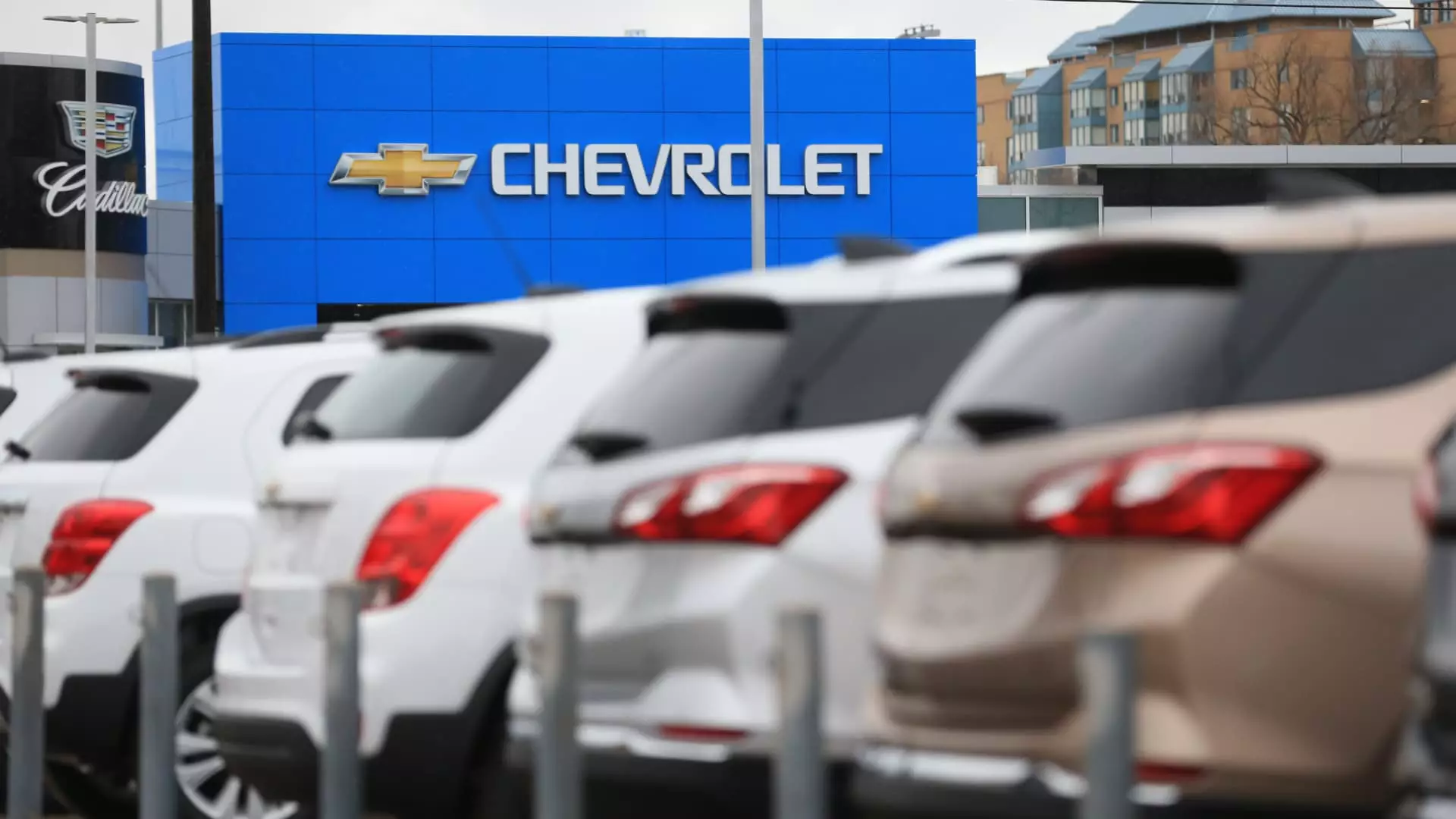The automotive landscape in the U.S. is witnessing a curious spike in vehicle sales during an uncertain economic period, particularly as we teeter on the brink of imposing tariffs introduced by the previous administration. Second only to the pandemic’s initial negative effects, these tariffs—specifically a proposed 25% increase on imported vehicles—are expected to radically reshape consumer behavior. Nonetheless, companies like General Motors have reported phenomenal growth, with a staggering 16.7% increase in sales compared to last year. But what does this actually signify in the grander scheme of things, and why should we be skeptical despite the positive numbers flaunted by automakers?
Consumer Behavior: A Ticking Time Bomb
It’s essential to understand the underlying motives of consumers during this period of growth. Many buyers are rushing into dealerships not purely out of enthusiasm for new models, but rather as a preemptive strike against expected price hikes. The fear of future inflation driven by tariffs is palpable, but one must ask: is this truly a sustainable buying frenzy, or simply a momentary reaction to impending economic pressures? J.D. Power’s assertion that consumers are jumping on the opportunity to buy before price hikes could reflect a time-bomb effect—immediate gains that mask deeper shifts in the consumer psyche that are yet to unfold.
Moreover, companies like Hyundai and Honda reported yearly gains, suggesting that while the market is buoyed for now, this optimism might be a mirage. These temporary boosts could disguise underlying vulnerabilities, particularly as the industry wrestles with costly tariffs and supply chain dislocations.
The Eccentric Case of Ford Motor
While others revel in growth, Ford has found itself in a precarious situation, posting a 1.3% sales decline. This notable outlier raises eyebrows as consumers question Ford’s strategic decisions, notably its discontinuation of the Ford Edge. Was this a move to pivot toward a more electrified future, or merely mismanagement? The company does tout positive retail growth, with a notable increase of 5% year-over-year sales; however, the reliance on a fleet sales approach could weaken its position as competitors win over more individual buyers.
It’s almost as if Ford sits in a waiting room for progress, contemplating the very trajectory of its future while rivals charge ahead. This situation exemplifies how vital it is for manufacturers to adapt quickly to changing consumer dynamics and broader economic realities.
What Lies Ahead for the Automotive Industry?
We stand at a pivotal threshold for the automotive sector. With a spectrum of predictions from various analysts forecasting uncertainty, the current sales spurt suggests a temporary uptick that may not maintain momentum in the coming quarters. Although companies like GM are basking in what seems to be a sweet success, the looming tariffs create an atmosphere ripe for upheaval.
As these tariffs soon materialize, the industry faces a crucial test of resilience. Will we witness a sustained transformation in consumer purchasing behavior, or will anxiety over pricing steer buyers away? The clock is ticking, and the implications of these decisions will be felt long after the first quarter’s sales figures are forgotten. In this race against time, it’s clear that the automotive industry must exhibit both agility and foresight to navigate the turbulent waters ahead.

